Allison Bruning's Blog, page 44
February 12, 2013
Happy Birthday, President Abraham Lincoln
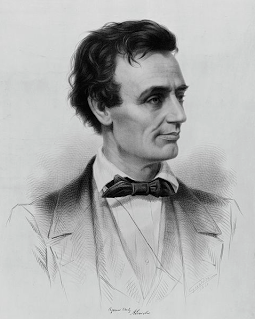 Abraham Lincoln, Republican candidate for the presidency, 1860
Abraham Lincoln, Republican candidate for the presidency, 1860US Public Domain
February 12
President Abraham Lincoln'sBirthday
Abraham Lincoln was one of those well loved, and highly cherished American presidents that has earned a timeless place in our history books. Abraham Lincoln's fame only increased after he died on April 15, 1865 at the Peterson's House in Washington, D.C. What is it about this man that fascinates us? Even after his death, people continued to talk about him, name building, schools, streets, and even towns after him. Books, screenplays, television shows and plays were written about him. Artists created masterpieces with his image. We are, as a nation, obsessed with this man even though his last descendant, Robert Todd Lincoln Beckwith, died December 24, 1985 in Saluda, Virginia.
Robert Lincoln, Abraham Lincoln's only son to survive to adulthood, once quoted to Wayne Whipple, the author of The Story of Young Abraham Lincoln, "I believe you know more about our family matters than I do!" The books was written in 1919. Robert Lincoln never had a close relationship with his father yet loved him so dearly that he openly wept on his father's coffin.
Wayne Whipple's book is an interesting read for anyone interested in learning more about Abraham Lincoln. Wayne gathered first hand accounts of Abraham Lincoln's life from his son, family, friends and others who personally knew the president. One of the interesting things I learned from the book was that Abraham Lincoln's grandfather was Daniel Boone's cousin. You can read the book for free on Project Gutenberg at http://www.gutenberg.org/catalog/world/readfile?fk_files=1530318&pageno=1
Published on February 12, 2013 07:55
February 11, 2013
Make New #Friends, Keep the Old
 Friendship by NoNo Fera
Friendship by NoNo Fera@http://www.flickr.com/photos/n-o-n-o/...
February 11
Make A New Friend Day
Make new friends,but keep the old.One is silver,the other is gold.
A circle is round,
it has no end.That's how long,I will be your friend.
A fire burns bright,
it warms the heart.We've been friends,from the very start.
You have one hand,
I have the other.Put them together,We have each other.
Silver is precious,
Gold is too.I am precious,and so are you.
You help me,
and I'll help you and togetherwe will see it through.
The sky is blue
The Earth is greenI can helpto keep it clean
Across the land
Across the seaFriends foreverWe will always be-Make New Friends SongAuthor Unknown
 Allison Bruning (in the middle) with two of her friends.
Allison Bruning (in the middle) with two of her friends.All humans are born with the necessity for social interaction. A 2012 UCLA Study On Friendship Among Women found people who had the most friends over a nine year people tend to reduce their risk of death by 60%. http://www.anapsid.org/cnd/gender/tendfend.html. Sixty percent! That's huge. Another study found that 72% women who suffer from depression tend to cure their depression just by interacting with their friends. According to Psychology Today, that's the same rate as if the women were on anti-depressants. Need more proof that friendships matter? Check out these websites: http://www.ladivalatina.com/willyoubemyfriend.htmlhttp://psychcentral.com/lib/2008/the-importance-of-friendship/
The ancient Greek philosopher, Aristotle, once said, "In poverty and other misfortunes of life, true friends are a sure refuge. They keep the young out of mischief; they comfort and aid the old in their weakness, and they incite those in the prime of life to noble deeds."
We've been creating, maintaing and breaking friendships since the beginning of humankind. Making the right connections can propel a person's career while a bad social interaction can break one. Some people have used this knowledge to use people. Yet others have honestly tried to maintain a friendship with people who are in a power of position over them.
Facebook, LinkedIn and other social media sites know the power a good friendship can make. Today it is easier to make new friends, reconnect with your old ones and interact with others worldwide. Americans have changed their definitions of what a true friendship is since the launch of Facebook on February 4, 2004. A superficial friendship can quickly become a lifelong one even if you haven't met that person in real life. Sometimes people will venture out just to meet their online friend. While this is great and many people have found their lifelong companion or friends, it can also be dangerous. You just never know if someone is lying about themselves online or not. Yet we would should get paranoid over such things. Just be cautious.
Has Facebook really changed our definition of friendship? Check out this slideshow to learn more: http://www.slideshare.net/mapsofworld/as-facebook-redefined-friendship-statistics-review
Wherever your friends are, cherish them. Don't forget to make new friends and keep the old, wherever they may be in the world.
Published on February 11, 2013 05:13
February 10, 2013
Umbrellas - They're Older Than You Think
 Umbrella Heads by Daniel Herrick LBIPP
Umbrella Heads by Daniel Herrick LBIPP@http://www.flickr.com/photos/psykotro...
February 10
Umbrella Day
Happy Umbrella Day. I don't know who founded umbrella day in the middle of winter but for those who live in Ireland it would seem appropriate. The wettest months in Ireland are December and January. The average yearly rainfall amounts vary depending on the region. Eastern Ireland can expect around 29.5 and 39.4 in per year, Western Ireland 39.4 and 49.2 in per year, while the mountainous areas receive the most rainfall with 118.1 in per year. The number of rainy days also depend on the region. The Southeast to Eastern regions tend to have 151 days per year of rain whereas the west can expect up to 225 days of rain per year. Although there is alot of rain in Ireland it is quite rare to experience a thunderstorm.
Ancient Origins Humans have been using umbrellas and parasols for over four thousand years. A parasol is used as a covering from the sun while an umbrella is used in all sorts of weather. The world's first umbrellas were actually parasols. Archaeologists have found evidence for the use of parasols in ancient art forms found in Egypt, Assyria, Greece, China and India.
Parasols have been used by those of higher rank throughout the world. The trend began in 1200BC Egypt. It was fashionable for those of the upper class to have lighter skin than the commoners. Thus when in public it became a necessity to shield themselves with a parasol to ensure they would not tan. In Ancient Assyria, only the king was allowed to carry a parasol.
The first collapsible umbrella was created in 21 AD China when Emperor Wang Mang (45 BC – October 6, 23 AD) had it designed for his ceremonial four-wheeled carriage. The Chinese are also responsible for creating a water-proof umbrella. They would wax and lacquer their paper parasols in order to create a rain proof early version of the umbrella.
You can learn more about the interesting history of umbrellas and parasols at http://inventors.about.com/od/uvstartinventions/a/Umbrella.htmhttp://www.oakthriftumbrellas.com/pages/umbrellas4.htmhttp://en.wikipedia.org/wiki/Umbrella
Published on February 10, 2013 08:39
February 9, 2013
Toothache Day: #Irish #Folklore Remedies
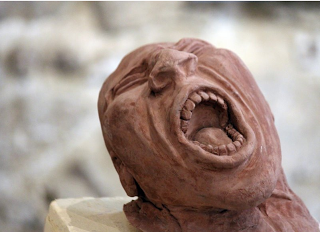 Myousry_WACC Photographic Competition 2011_(9)
Myousry_WACC Photographic Competition 2011_(9)By: Mohamed Ahmed Yousry
@http://www.flickr.com/photos/59220605...
February 9
Toothache Day
I would tell you Happy Toothache Day but I don't think anyone should be happy to have a toothache. Toothaches are caused by many different dental problems including cavities. I cannot find a reason as to why we have Toothache Day yet I do find it interesting that it celebrated on the anniversary of when the Hersey company was formed on February 9, 1894.
As long as humans were alive mankind has experienced toothaches. We have tried to solve our pain through a wide variety of home remedies and drug. The interesting list of home remedies and drugs concocted over the course to time to deal with toothaches is much too long for this blog posting. In keeping with my Irish theme I want to share with you some of the interesting home remedies the Irish have for curing a toothache.
Ask The Fairies We have all heard of the tooth fairy. Every time a child looses a tooth he or she places it under their pillow before they go to bed. The tooth fairy comes in the middle of the night and swaps the tooth out with money. But did you know in Ireland there is another dental legend surrounding the fairies?
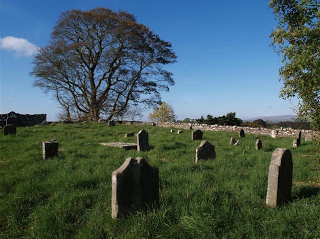 Toothache Tree in Donaghanie graveyard
Toothache Tree in Donaghanie graveyardBy: Kenneth Allen
@http://www.geograph.org.uk/photo/1541... Bell Oak tree is a hollow tree that is native to Ireland. The Irish people believed if the tree was found to grow in a cemetery then it was the home of fairies. If you came across the tree you were supposed to turn your cloak or coat inside out to neutralize their magic then run away. Yet you could employ the fairies to elevate your toothache by leaving gifts in the tree. Most often it is a monetary gift but sometimes people have left nails. If the fairies accept your gift then they would elevate your pain. But beware, you don't want to steal from any of there gifts laying around the tree. For if you do, you'll pay dearly.
Another way to employ the fairies to help you is by finding a Fairy Toothache Stone. Here you can hammer nails into the stone, just as you would with the Toothache Tree. It has the same effect as the Toothache tree and the same curse if you disturb the nails.
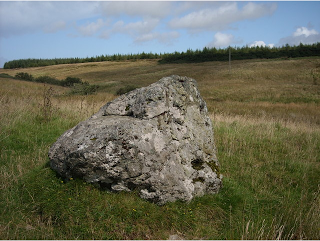 Fairies Toothache Stone By Alistair Campbell
Fairies Toothache Stone By Alistair Campbell@http://www.geograph.org.uk/photo/1470396
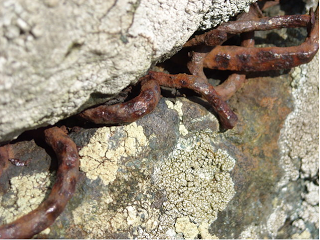 Closeup of a Fairy Stone By Alistair Campbell
Closeup of a Fairy Stone By Alistair Campbell@http://www.geograph.org.uk/photo/1470404
Graveyard If you go to the graveyard but you can't find a fairy stone or a toothache tree you can still elevate your pain. Go to a grave, any grave will do, but you might want to chose someone you knew. It's about to get personal. Kneel upon the person's grave. Recite three prayers and three aves for the soul of the deceased. After you have done this take a handful of grass from over the grave and chew it. Be certain you do not swallow any of it or the cure won't work. Once all of it has been chewed spit out to the side. Anyone who successfully does this will live a hundred years without a toothache.
Another way for the dead to cure your toothache is to procure either a dead man's hand or the tooth from a dead horse. After you have either one, rub it on your jaw where the toothache is. The hand or tooth will take your pain away.
Take A Vow If you're not too keen on asking the dead or the fairies to help you, you could always seek God to elevate your pain. There are several ways to do this.
Sorry ladies this cure only works with men. The man must vow to stop shaving on Sundays and commit to his vow for the rest of his life. When he does this God will show favor upon him by elevating his toothache.
This cure if for everyone. The person must take a vow to God, the Virgin Mary and the New Moon that they will never comb their hair on Friday in remembrance of the cure he or she is asking for. This ritual continues until the New Moon appears. Whenever the person sees the next New Moon he or she must stop whatever they are doing, even if crossing a river, fall to their knees and pray five times in gratitude for his or her cure.
Fish Bones So you don't want to go to the graveyard and your not Catholic. Don't fear the Irish still have a cure for you. The Irish believe that the Haddock can elevate your pain because they gained the power of never having toothaches ever since Jesus conducted the miracles of the loaves and fish. The Irish superstition states if you carry a two jawbones of the Haddock in your pants pockets you will never have a toothache again.
Charms The last cure for your toothache deals with Saint Peter. Create a charm with theses words on it.
"As Peter sat on a marble stone,The Lord came to him all alone,'Peter, Peter, what makes you shake?''O Lord and Master, it is the toothache.'Then Christ said, 'Take these for My sake,And never more you'll have toothache.'"
After you have created your poetic masterpiece sew the charm inside your clothes. You will never have a toothache again because Christ is blessing you through the charm. But you must be wearing the charm in order for it to work.
Published on February 09, 2013 04:41
February 8, 2013
Eat Your #Desert First: National #GirlScouts Cookies Day
 By Bandita @http://www.flickr.com/photos/cosmic_b...
By Bandita @http://www.flickr.com/photos/cosmic_b...February 8
NationalGirl Scout Cookies Day
I must say of all the bizarre holidays out there this one is my favorite. Who doesn't love a Girl Scout cookie? I was in Girl Scouts for most of my life. I wanted to join the organization after I saw a group of Girl Scouts marching in the Marion Popcorn Festival Parade in Marion, Ohio. I wanted to be just like them. My mother signed me up that year and the following year I was marching in the same parade. I was a very proud Brownie. I remained in Girl Scouts throughout my entire childhood and even became a leader as an adult. I had many great experiences while I was in Girl Scouts. One of my favorite things to do in scouting was sell Girl Scout Cookies. Every year I looked forward to when our leaders would pull out the poster that showed us the prizes we would win if we sold a certain amount of cookies. The more you sold the more prizes you won. The overachiever that I am wanted to win it all! There were many years I was the top seller. I had everyone in my family helping out with my cause and I made sure I was the first scout to approach all my teachers.
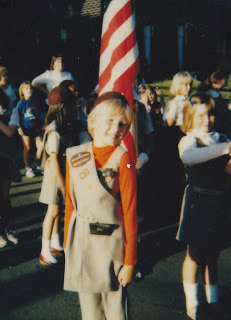 My first Girl Scouts Uniform. Although Girl Scouting is a National Organization the sale of Girl Scout Cookies is run by the local Girl Scout Council. Approximately 70% of all funds raised goes back to the council in order for the council to continue to operate, maintain camps and provide programming for all their girls. Troops also benefit in the sale of Girl Scout Cookies. Each troop receives 10-15% of all profits from their cookie sales. Those funds are then used to help the girls with programming, uniform cost, camp scholarship and other expenses.
My first Girl Scouts Uniform. Although Girl Scouting is a National Organization the sale of Girl Scout Cookies is run by the local Girl Scout Council. Approximately 70% of all funds raised goes back to the council in order for the council to continue to operate, maintain camps and provide programming for all their girls. Troops also benefit in the sale of Girl Scout Cookies. Each troop receives 10-15% of all profits from their cookie sales. Those funds are then used to help the girls with programming, uniform cost, camp scholarship and other expenses.Girl Scout Cookies are a great way for the Girl Scout to not only help support their troop financially but to build five key skills. These being: Goal Setting, Business Management, Decision Making Skills, People Skills and Business Ethics. You can learn more about Girl Scouting and Girl Scout Cookies at http://www.girlscouts.org/program/gs_cookies/the_five_skills.asp
Here's a little known fact that I never knew until I moved from Ohio to Texas. There may varieties of Girl Scout cookies around the United States. That is because there is more than one bakery. Each region of the United States has its own bakery. The two bakeries used are Little Brownie Bakers, a subsidary of the Keebler company, and ABC Bakers, a subsidiary of Interbake Food. The Girl Scouts of America gives each bakery free range on the kind of cookies they want to make for their region with one exception. They must all produce Thin Mints, Peanut Butter Patties (AKA Tag-a-longs) and Shortbread (Trefoils). Currently there are up to 28 different varieties of Girl Scout cookies being made nationwide. You can read about the bestselling cookies on the Girl Scouts website at http://www.girlscouts.org/program/gs_cookies/meet_the_cookies.asp
A National Treasure
Juliette Gordon Low founded Girl Scouts in Savannah, Georgia on March 12, 1912. Five years later, the Mistletoe Girl Scout Troop of Muskogee, Oklahoma began to bake and sell cookies in their local high school cafeterias in order to raise funds for their troop. Their service project was such a success that it gained the attention of a reporter for The American Girl. The author of the article was a Girl Scout director in Chicago who shared a simple recipe for Girl Scout cookies and the idea that troops could raise funds by having the girls bake the cookies with their mother then selling them. The director estimated the cost of baking would run between 26 - 36 cents. The troops could then turn around and sell a dozen cookies for 26 to 36 cents each. Think about that. That means by selling six or seven dozen cookies those girls would have a HUGE profit. Some 2,000 troops started their own cookie campaigns during the 1920's and 1930's. Here is that recipe.
 http://www.gsnetx.org/LinkClick.aspx?...
http://www.gsnetx.org/LinkClick.aspx?...Today, a box of Girl Scout cookies cost $3.50. You can learn more about the history of Girl Scout Cookies at http://www.gsnetx.org/LinkClick.aspx?fileticket=ZHAfn00jneA%3D&tabid=167
Girl Scout Cookies are ingrained in American culture so deep that they have become a recognized symbol. I have been involved with several councils but I have to say I have never seen a Girl Scout cookie event like the one the Kentuckiana Girl Scout Council of Louisville, Kentucky places each year. The Kentuckiana Girl Scout Council serves 6,500 adult members and 22,000 girls in 64 counties throughout southern Indiana, central and western Kentucky. Their largest fundraiser, Deserts First, takes place in Owensboro, Paducah and Louisville, Kentucky. Deserts First invites well known local chefs to create culinary masterpieces using Girl Scout Cookies as their main ingredient. The public is invited to taste their creations and mingle with other adults who support the Girl Scout organization. The night includes music, silent and live auctions, hors d’oeuvres, and the opportunity to vote on the best chef creation of the night. The winner of the best desert is announced during the event. The Louisville event is held only in January but Paducah and Owensboro are year round. You can view the recipes for the 2012 Lousville Deserts First event here. https://www.gskentuckiana.org/Portals/0/Fundraisers/2012-Recipes-from-Desserts-First-Louisville.pdf. Previous recipes are here: https://www.gskentuckiana.org/Fundraisers/Desserts-First/Desserts-First-Recipes.aspx
Published on February 08, 2013 08:03
February 7, 2013
Charles #Dickens - A Horrible #Childhood Inspires Greatness
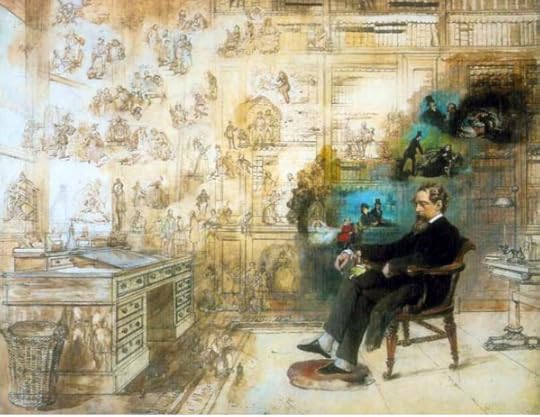 Dickens's Dream.
Dickens's Dream.Painted 1875 by Robert William Buss (1804-1875)
US Public Domain February 7
Charles Dickens Day
Happy Charles Dickens Day. Today we honor the creative genius who brought to the world Oliver Twist, A Christmas Carol, Nicholas Nickleby, David Copperfield, A Tale of Two Cities and Great Expectations. Charles Dickens' classical stories have not only become some of our best beloved tales but have also transcended across a wide variety of media. Charles Dicken's tales have inspired authors, artists and musicians throughout out time.
Humble Beginnings Inspire Greatness Charles John Huffam Dickens was born in Portsmouth, England to John and Elizabeth Barrow Dickens on February 9, 1812. He was the second of eight children. Charles was baptized and reared in the Church of England although later on in his life he would convert to Unitarianism.
John Dickens (August 21, 1785 – March 31, 1851) was a clerk with the Royal Navy Pay Office at Portsmouth in Hampshire who aspired to strike it rich. Although he had the dream he didn't possess the financial skills to make his dream a reality. He kept his family in poverty because he lived well past his financial means. Elizabeth aspired becoming a school teacher and director. She ensured her children received an education by becoming their first teacher. It was through his mother that Charles developed a love for reading.
Two years after Charles' birth, John moved his family to Norfolk Street in London. The young family didn't stay long in their new home. In 1816, John Dickens moved his family to Chatham, Kent after he was transferred to the Chatham Royal Dockyard. Charles and his siblings were free to roam the countryside and explore the nearby old castle at Rochester. He had a very happy childhood and many of his experiences there inspired his literary works. He loved to spend his time in the outdoors and reading books. When asked about his boyhood, Dicken's once stated he was "very small and not-over-particularly-taken-care-of boy." Charles had a photographic memory that served him well in his later years in that he could remember everything pertaining to his youth.
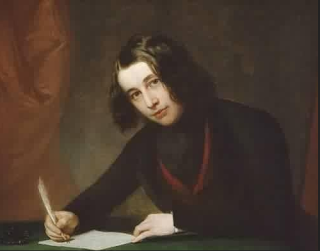 A Young Charles Dickens
A Young Charles Dickens1842
US Public DomainCharles Dicken's early education was limited but was supplemented through his love of reading. When he was nine years old he left his mother's tutorage and continued his studies at the private William Giles’s School. A year later, his father was recalled to London and his income substantially lessened after the English Reforms in the Admiralty closed the Chatham Royal Dockyard. Despite the interruption in finances John continued to send his children to private school. John had moved his family into the poorest section of London yet continued to live well above his financial means. Two years later, John was arrested for bad debt. His entire family, with the exception of Charles, were sent to Marshalsea Prison with their patriarch. Charles was forced to leave his schooling and was sent to work in a black boot factory to help pay off his father's debts. His experience in the rodent infested, run down factory was horrible and left lifetime mental scars. Twelve year old Dickens suffered from loneliness and despair for the next three years. He felt abandoned by the adults who were supposed to be taking care of him. His abandonment issues are a reoccurring theme in his books. The setting of his books David Copperfield and Great Expectations were the fictionalized accounts of his time spent in the factory. The character Mr Micawber in David Copperfield was largely inspired by his own father.
Despite the loneliness, Charles wasn't completely without contact with his family. During the time of his father's imprisonment his sister, Francis, was studying at the Royal Academy of Music. Every Sunday, he would accompany her to Marshalsea to visit with their family. Dickens would later use Marshalsea as the inspiration for his serial novel, Little Dorrit.
In 1825, much to the relief of Charles and his family, his father received an inheritance that paid off all of his debts. Charles' family returned to London but his father was not permitted to return to his previous employment. Instead he was granted a pension. John Dickens sought employment elsewhere and became a reported for The British Press. Charles returned to his family and completed his last two years of education at the private Wellington House Academy in London. He unable to complete his education because The British Press failed and his parents were evicted from their home. Once again, Charles had to help his family with the finances. Now fifteen years of age, Charles was employed by a firm of solicitors. Yet he never gave up on his writing dreams. Charles' first job actually helped launch him in the literary world. Many law firms began to take notice of his superb writing skills and within the year they were hiring him to write freelance reports. A few years later, he was writing articles for two London newspapers.
Without the traumatic experiences Charles Dickens went through in his early life he never would have become the "greatest novelist of all time." Charles Dickens didn't dwell on the negatives of his past he transformed them into something positive and used those experiences to enrich his stories.
You can learn more about Charles Dickens here:http://www.biography.com/people/charles-dickens-9274087http://www.bbc.co.uk/history/historic_figures/dickens_charles.shtmlhttp://www.victorianweb.org/authors/dickens/pva/pva340.htmlhttp://www25.uua.org/uuhs/duub/articles/charlesdickens.htmlhttp://www.dickensfellowship.org/life-charles-dickens
Published on February 07, 2013 06:48
February 6, 2013
Reflections hits #4 on #Amazon #Bestseller's List!
 http://www.amazon.com/Reflections-Poems-Essays-ebook/dp/B00AC1DB7G/ref=zg_bs_6361451011_4
http://www.amazon.com/Reflections-Poems-Essays-ebook/dp/B00AC1DB7G/ref=zg_bs_6361451011_4I am just so giddy I want to jump up and down with joy. This morning I awoke to find this on Amazon. OMG! OMG! OMG! I'm jumping up and down like a freaking manic! Look what my book is doing on Amazon!
Amazon Best Sellers Rank: #198,134 Paid in Kindle Store (See Top 100 Paid in Kindle Store)
#4 in Kindle Store > Kindle eBooks > Fiction > Poetry > Native American
#85 in Kindle Store > Kindle eBooks > Fiction > Poetry > Inspirational & Religious
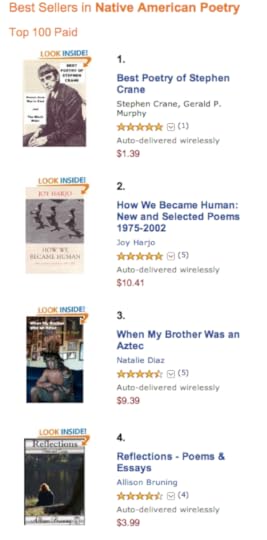
I could not have done it without all my fans. Thank you from the bottom of my heart. You have no idea what this means to me. You are all the most wonderful fans any author can have. :-)
Published on February 06, 2013 07:56
#American #Political Lame Ducks - Our 20th #Amendment
 My neice, Maria T. Espinosa,
My neice, Maria T. Espinosa,meets President Obama while on tour in Iraq
February 6
Lame Duck Day
Happy Lame Duck Day! You're probably wondering why I have a picture of President Barack Obama on a blog posting about Lame Duck Day. All American presidents have been lame ducks since the 20th amendment went into effect on February 6, 1933.
A lame duck is someone whose about to be "shown out the door" of their position. Our president's term of office is four years. He or she (cause I am looking forward to the day a female becomes president) becomes a lame duck on the last year of office. The president can run for a second term. If elected, the president serves another four years but after that can no longer serve as our president. If he or she isn't elected, they have another chance in their lifetime to run again. The 20th amendment does not allow the president to serve more than two terms of office.
The 20th Amendment changed other things in pertaining to how our country operates. Before the 20th amendment members of Congress would remain in their seats a full thirteen months after they lost their elections while the new members of Congress began their terms. This often caused political problems because the new president still had to deal with the lame duck congress members while the new congress members were trying to do their jobs. Abraham Lincoln had to wait four months after he and the new members of congress were elected in 1861 to deal with the succession of the southern states. Likewise, Franklin D. Roosevelt and his new congress couldn't deal with the Great Depression problems for four months after they were elected.
The Lame Duck Amendment changed all that. In the past, presidents began their new terms of office in March. The 20th amendment moved the president's Inaugural Day to January. This allowed for a shorter gap of time in electoral sessions thus ensuring the Lame Duck congress members couldn't hold up the president and the new congress.
The 20th Amendment Section 1. The terms of the President and Vice President shall end at noon on the 20th day of January, and the terms of Senators and Representatives at noon on the 3d day of January, of the years in which such terms would have ended if this article had not been ratified; and the terms of their successors shall then begin.
Section 2. The Congress shall assemble at least once in every year, and such meeting shall begin at noon on the 3d day of January, unless they shall by law appoint a different day.
Section 3. If, at the time fixed for the beginning of the term of the President, the President elect shall have died, the Vice President elect shall become President. If a President shall not have been chosen before the time fixed for the beginning of his term, or if the President elect shall have failed to qualify, then the Vice President elect shall act as President until a President shall have qualified; and the Congress may by law provide for the case wherein neither a President elect nor a Vice President elect shall have qualified, declaring who shall then act as President, or the manner in which one who is to act shall be selected, and such person shall act accordingly until a President or Vice President shall have qualified.
Section 4. The Congress may by law provide for the case of the death of any of the persons from whom the House of Representatives may choose a President whenever the right of choice shall have devolved upon them, and for the case of the death of any of the persons from whom the Senate may choose a Vice President whenever the right of choice shall have devolved upon them.
Section 5. Sections 1 and 2 shall take effect on the 15th day of October following the ratification of this article.
Section 6. This article shall be inoperative unless it shall have been ratified as an amendment to the Constitution by the legislatures of three-fourths of the several States within seven years from the date of its submission.
Published on February 06, 2013 04:31
February 5, 2013
America's First Meterologist Was A Loyalist?
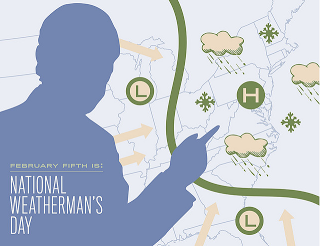 National Weatherman's Day by Kristian Bjornard
National Weatherman's Day by Kristian Bjornard@http://www.flickr.com/photos/bjornmea...
February 5
NationalWeatherman's Day
Happy Weatherman's Day! Forecasting the weather can be a tricky job for meteorologists. Despite all the technological advances we have made in the field Mother Nature doesn't like to give up all her secrets. Much of Americans lives depend on the forecast. We look to the skies to determine how to dress, when to plant and much more. Today we honor the men and women who work in the field of meteorology. Meteorology is the study of the Earth's atmosphere. The science of meteorology was studied in the past but did not make significant advancements until the 18th century. National Weatherman's Day is celebrated on the same day each year to honor the birthday of America's first meteorologist, Doctor John Jeffries.
The Loyalist Meteorologist - John Jeffries John Jeffries was born to David Jeffries (1714-1784) and Sarah Jaffrey on February 5, 1745 in Boston, Massachusetts. His parents were first cousins. David Jeffries was the Boston town treasurer during and after the American Revolutionary War. He also served as a deacon at the Old South Church.
John Jeffries lost his mother when he was 8 years old. Two years later, his father remarried to the widow of Isreal Walker, Deborah Lyde Walker. Deborah had been the mother figure for the remainder of John's childhood. During the early 1760's John left his home to study at Harvard University where he earned his MA in 1766. He lost his stepmother a year later. John left the colonies and pursued a medical degree at Aberdeen University in Scotland. After achieving his medical degree in 1769 he returned to Boston where he practiced medicine under Doctor James Llyod. Doctor James Llyod was a good friend of the British general and politician Sir William Howe.
John Jeffries had been in Boston during the Boston Massacre of March 5, 1770. On that tragic day when five British soldiers killed five civilians and injured many after shooting into a crowd, John and Dr. James Llyod attended to the wounds of Irish sailor Patrick Carr. Patrick had told the doctors the British had been more lenient with the Boston then they ever would be in his native Ireland by ending their shooting sooner than they could have. John and Dr. Llyod took the dying man's words and testified for the defense in the trial against the British soliders. It is quite surprising that John was a loyalists since his family were patriots. Nevertheless, John remained loyal to the British crown.
John never participated in the political protests that were common in the early 1770's. In 1771, Admiral Montague, the commander in chief of the British North American Squadron, offered John the position of assistant surgeon to his sailors while the Royal Navy was docked in Boston Harbor. John gladly accepted the offer. Two years later, John married Sarah Rhoads. The couple had four children, one of whom died at an early age. After John left his service to the Royal Navy in 1774, he began to keep a record of daily weather patterns. He kept his recording the weather until March 4, 1776, when the war halted his research. He pick his research back up in 1816.
You can learn more about this interesting man and his research in this three part series in his life. http://boston1775.blogspot.com/2006/07/dr-john-jeffries-physician-loyalist.html
Published on February 05, 2013 07:19
February 4, 2013
#UnitedStates First Mail Carrier
 Her Appointed Rounds by David Lee Pardue
Her Appointed Rounds by David Lee Pardue@http://www.flickr.com/photos/oldrebel...
February 4
Thank A Mailman Day
We are mothers and fathers. And sons and daughters. Who every day go about our lives with duty, honor and pride. And neither snow, nor rain, nor heat, nor gloom of night, nor the winds of change, nor a nation challenged, will stay us from the swift completion of our appointed rounds. Ever.http://about.usps.com/strategic-plann...
Founded on July 26, 1775 by the Second Continental Congress, the United States Postal Service is one of the oldest federal agencies in the United States. It has had a long and interesting history that you can read about here http://inventors.about.com/library/inventors/blmailus1.htm.
Despite the longevity of the United States Postal Service the idea of having your mail delivered to your house was not something the Postal Service had been created to do. The postage paid was only used to pay the cost to have the letter mailed from post office to post office. If citizens wanted their mail they had to go to the Post Office and pick it up from the postal clerk. Some cities did allow private businesses to charge homes to have their mail delivered. This was common practice until 1863 when Joseph Williams Briggs revolutionized the post service with his idea of implementing free home delivery of all mail.
The Birth of the Mailman
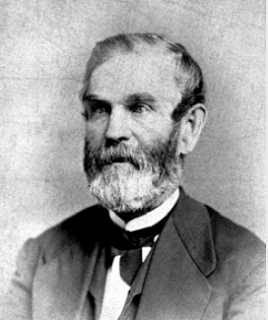 Joseph William Briggs
Joseph William Briggshttp://about.usps.com/who-we-are/post... William Briggs was born on July 2, 1813 in Claremont, N.Y and was raised by his uncle, the governor of Massachusetts, George Nixon Briggs. In 1836, Joseph married Harmony Gilmore. The couple had nine children together - Mary, Nancy, Rufus, Laura, Alfred, Isabella, Emma, Leonard, and Kate.
Joseph was hired as a postal clerk and was assigned to Cleveland, Ohio's first post office during the early 1860's. His job was a vital one for all the wives, mother, sisters and daughters of the soldiers who were fighting in the Civil War as the post office was their only means of communicating with their loved ones. Each week on "Army Day" the women would gather at the post office to pick up these precious letters.
The winter of 1862 was a bitter one in Cleveland, Ohio and the Civil War was at it's highest peak. The women of Cleveland gathered in long lines in front of the post office waiting for a letter from their loved one on a bleak "Army Day". A compassionate man, Joseph's heart broke watching the women suffer in the bitter cold. As he handed their letters to them he came up with an idea. Why not have the letters delivered to their homes instead of asking the women to wait in long lines? Joseph wrote a letter to the Postmaster General Montgomery Blair explaining in detail his idea for a free mail delivery. The Postmaster liked the idea and relayed it to President Lincoln in his 1862 report. Montgomery reasoned that if the United States were to implement salaried mail carriers it would "greatly accelerate deliveries and promote public conveniences." If mail was more convenient then people would use it more often thus allowing the postal service to obtain a rise in revenue. England had already seen an increase in revenue by implementing free city mail deliveries. If it worked over there then why couldn't it work in the United States? President Lincoln liked the idea. Joseph William Briggs was given permission to experiment with a free city mail delivery service from his postal station in Cleveland, Ohio.
The First Mail Delivery Once Joseph learned his experiment had been approved he immediately went to work. He spoke to shop owners and neighbors to learn how they would like their mail to be delivered. After developing his routes he developed a method of sorting all the mail so it would be easier to deliver. Joseph would separate the main into paper bags, loaded the bags into a basket then set out for his personal deliveries. He delivered not only to homes but businesses as well. His only problem was that some of the streets in Cleveland had duplicate names or no names at all. Houses weren't numbered, either. Two streets were named Lincoln. Residents on both streets wanted to keep the name because it honored their wartime president. In an effort to create order out of chaos, Joseph renamed one of the streets Abraham. Not all Cleveland citizens were happy with Joseph's new system. The private businesses who had been charging people so they could deliver their mail saw a decline in their profits. They eventually went out of business.
Joseph's experiment with free mail delivery was a huge success. On March 3, 1863, Congress passed an act stipulating free mail delivery should be established in all postal stations where the local revenue was more than sufficient to do so. The act went into effect on July 1, 1863.
You can read more about the history of the Postal Office Letter Carriers at http://about.usps.com/who-we-are/postal-history/city-delivery.pdf
http://lettercarrierconnection.com/FirstLetterCarrier.pdf
and
http://www.heartlandscience.org/comm/mail.htm
Published on February 04, 2013 06:27



